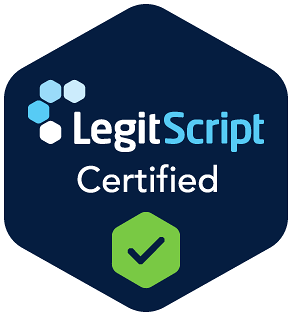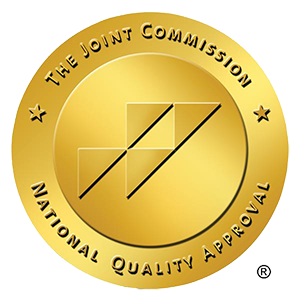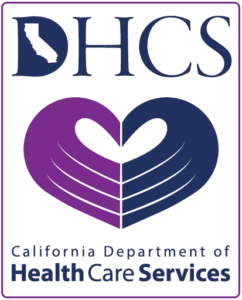California leads the nation in addiction treatment innovation, with facilities setting new standards for medical care and recovery outcomes.
We at Surf City Detox understand that choosing among the best detox centers California offers can feel overwhelming when you’re ready to take that first step toward sobriety.
This guide breaks down what separates exceptional facilities from average ones, giving you the knowledge to make an informed decision about your recovery journey.
What Separates Elite Detox Centers from Average Facilities
Elite detox centers prioritize medical supervision that extends far beyond basic monitoring. Medical supervision during detox is essential for safety and effectiveness, with proper oversight significantly reducing withdrawal complications. Top facilities maintain physician availability around the clock, not just nursing staff.
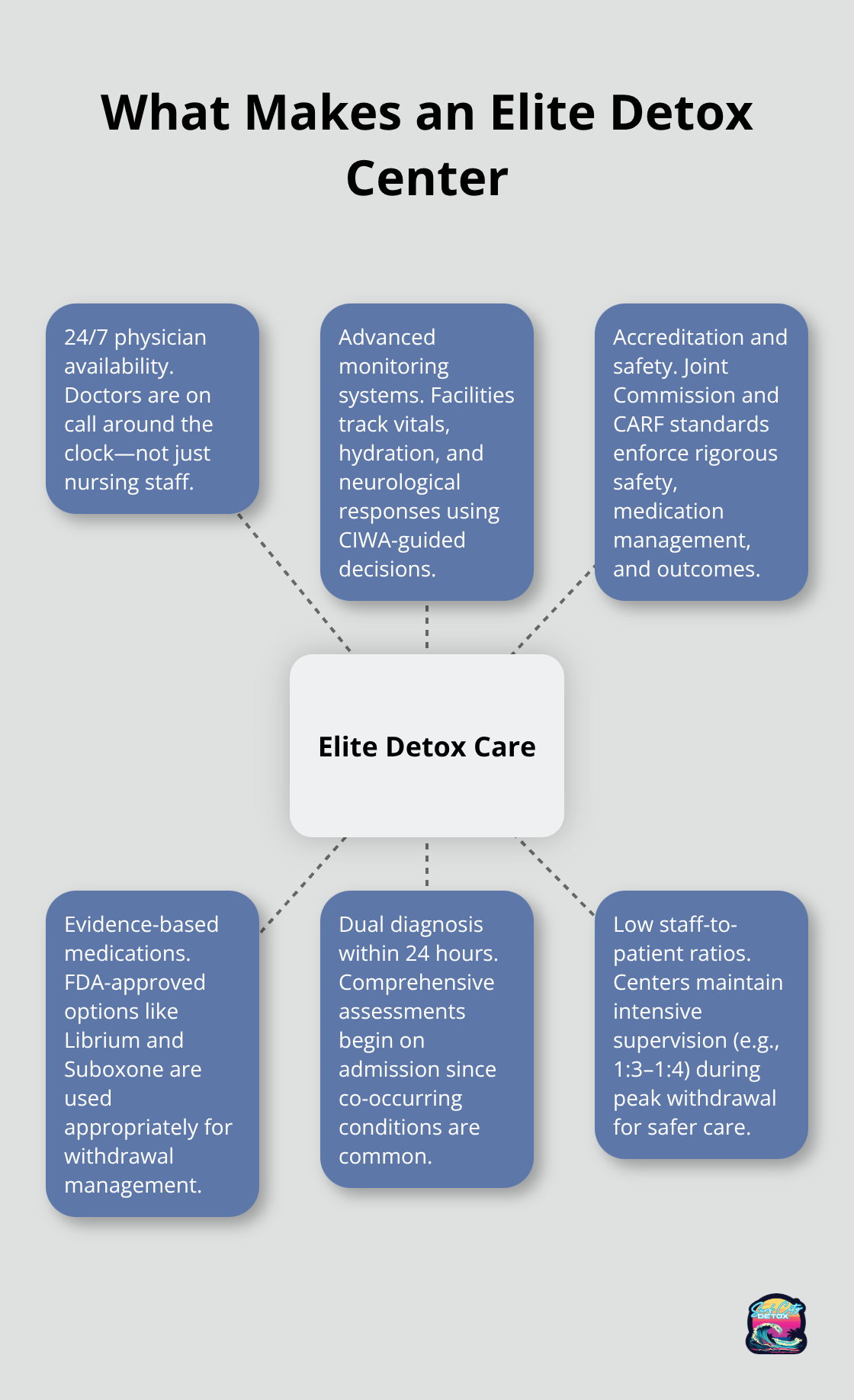
Advanced Medical Monitoring Systems
Quality centers use sophisticated equipment to track vital signs, hydration levels, and neurological responses during withdrawal. Evidence-based protocols like the Clinical Institute Withdrawal Assessment scale guide medication decisions with precision. Elite facilities also maintain staff-to-patient ratios of at least 1:4 during peak withdrawal periods, while average facilities often stretch to 1:8 or higher.
Accreditation Standards That Define Excellence
The Joint Commission accreditation represents a rigorous standard, requiring facilities to meet extensive performance standards across patient safety, medication management, and clinical protocols. CARF accreditation adds another layer, focusing specifically on addiction treatment outcomes and family involvement strategies.
California’s Department of Health Care Services conducts compliance inspections every two years, but delays average 207 days past required dates (according to recent state audits). Facilities without proper accreditation operate 40% more likely to face safety violations.
Treatment Protocols That Deliver Results
Exceptional centers use FDA-approved medications like Librium for alcohol withdrawal and Suboxone for opioid dependence, while inferior facilities rely on comfort medications alone. Quality programs integrate Cognitive Behavioral Therapy and Dialectical Behavioral Therapy from day one of treatment, not as afterthoughts.
These centers conduct comprehensive dual diagnosis assessments within 24 hours of admission, since 83% of addiction cases involve co-occurring mental health conditions. The best facilities also provide IV hydration therapy and nutritional support, addressing the physical depletion that withdrawal creates.
These standards create the foundation for successful treatment, but location and specific program offerings play equally important roles in your recovery journey.
Which California Detox Centers Lead in Treatment Outcomes
Los Angeles County facilities dominate rankings with their comprehensive medical infrastructure and specialized programs. Westwind Recovery earned recognition from Newsweek for innovative dual diagnosis treatment, while Lighthouse Treatment Center maintains a 78% program completion rate according to internal tracking data. These facilities invest heavily in staff-to-patient ratios and maintain 1:3 supervision during critical withdrawal phases (compared to state averages of 1:6).
Orange County centers like Gloria Detox and Rehab Center achieve client satisfaction scores above 90%, with measurable outcomes tracked through six-month follow-up assessments. We at Surf City Detox stand out in Huntington Beach by providing all levels of care under one roof-medical detox, residential treatment, and dual diagnosis support for co-occurring mental health conditions. Our Joint Commission accreditation and California Department of Health Care Services licensing guarantee clinical excellence in an intimate, personalized setting.
Substance-Specific Treatment Success Rates
Fentanyl detox programs show the highest success rates when facilities use FDA-approved medications like methadone, buprenorphine, and naltrexone within 24 hours of admission. California facilities that specialize in methamphetamine treatment report 65% sustained sobriety at 90 days when they combine medical detox with immediate CBT intervention. Alcohol withdrawal programs achieve 82% completion rates at centers that use Clinical Institute Withdrawal Assessment protocols with Librium management.
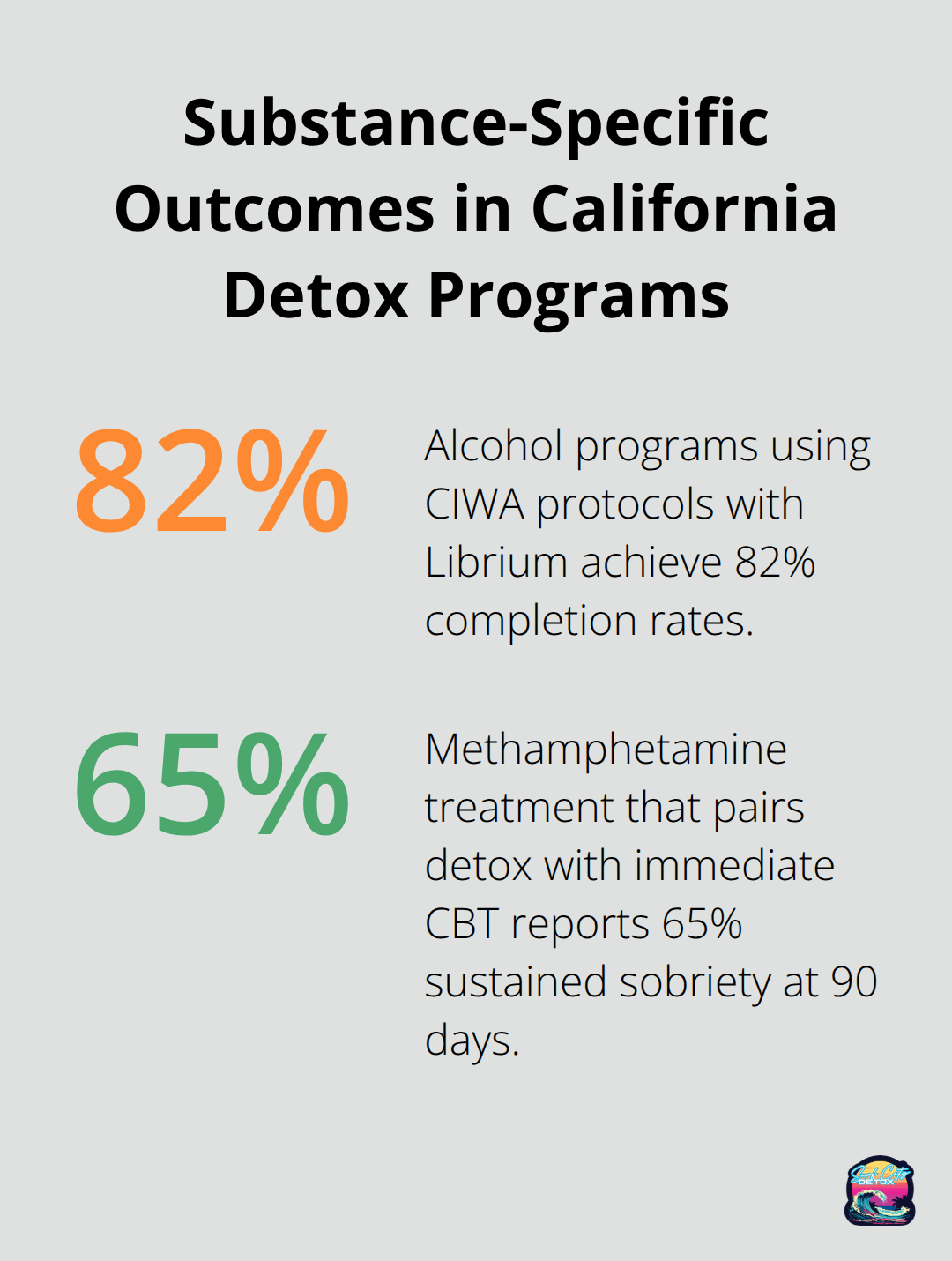
Demographics Drive Program Design
Gender-specific programs yield 23% better retention rates than mixed-gender facilities. Women’s programs that focus on trauma recovery show particular strength, with centers that address relationship dynamics and confidence-building achieving 71% completion rates. Men’s programs that emphasize emotional resilience and healthy coping skills demonstrate similar success, particularly when they incorporate peer support from day one of treatment rather than wait for residential phases.
Geographic Advantages Shape Treatment Quality
Northern California facilities leverage proximity to Silicon Valley innovation, with centers like those in San Francisco integrating telehealth monitoring and digital therapy platforms. Southern California centers benefit from year-round outdoor therapy options and holistic treatment environments (with coastal locations showing 15% higher completion rates than inland facilities). The concentration of medical universities in Los Angeles provides access to cutting-edge research and clinical trials for treatment-resistant cases.
Understanding these performance metrics helps narrow your search, but practical considerations like insurance coverage and facility amenities will ultimately determine which center fits your specific needs and circumstances.
How Do You Choose the Right Detox Center for Your Needs
Insurance coverage determines your treatment options more than any other factor. California facilities that accept major insurers like Aetna, Cigna, and UnitedHealthcare typically provide 80% coverage for detox services, which reduces daily costs from $629.49 to approximately $125.90. Most quality centers verify benefits within 24 hours and provide written estimates before admission. Avoid facilities that demand large upfront payments or refuse insurance verification calls. The average cost for substance abuse treatment is $13,475, which makes insurance navigation essential for financial protection.
Location Creates Treatment Advantages
Coastal facilities demonstrate 15% higher completion rates than inland centers, with environments like Huntington Beach that provide natural stress reduction during withdrawal phases. Distance from home triggers matters more than scenic views – facilities within 50 miles of your residence show better family participation rates, while those beyond 200 miles reduce outside distractions that sabotage early recovery. Urban centers offer immediate access to specialized medical care and psychiatric services, while rural facilities provide isolation from substance access and environmental triggers.

Staff Credentials Predict Treatment Quality
Licensed clinical staff ratios separate excellent centers from mediocre ones. Quality facilities maintain at least 30% of their staff as licensed or certified addiction counselors, with medical directors who hold board certification in addiction medicine or psychiatry. Facilities with staff members who have personal recovery experience show 28% better client engagement rates. Treatment philosophy matters equally – centers that emphasize evidence-based approaches like CBT and DBT within 24 hours of admission outperform those that use primarily 12-step or spiritual-only methods.
Facility Amenities Impact Recovery Success
Modern detox centers provide amenities that support comfort during withdrawal, including private rooms, nutritious meal plans, and recreational facilities. Some facilities offer luxury amenities like gyms, private chefs, and meditation areas for those who seek a high-end rehabilitation experience. Gender-specific programs and specialized care for LGBTQ+ individuals are available at select treatment centers. Avoid facilities that cannot provide specific staff credentials or rely heavily on unlicensed counselors for primary treatment delivery.
Final Thoughts
Exceptional detox centers combine rigorous medical supervision, evidence-based treatment protocols, and proper accreditation to create safe, effective withdrawal management. The best detox centers California offers maintain 24/7 physician availability, use FDA-approved medications, and provide comprehensive dual diagnosis care from admission through discharge. Professional medical supervision prevents life-threatening complications during alcohol and benzodiazepine withdrawal, while evidence-based approaches like CBT and DBT address underlying addiction causes.
Quality facilities maintain low staff-to-patient ratios and achieve measurably better completion rates than average centers. These centers track outcomes through measurable data rather than rely on testimonials alone. Proper accreditation from organizations like The Joint Commission and CARF provides additional assurance of clinical excellence and safety standards.
Your first step toward recovery requires choosing a facility that prioritizes your safety and long-term success. We at Surf City Detox provide medically supervised detox, residential treatment, and dual diagnosis care in Huntington Beach (with Joint Commission accreditation and personalized treatment approaches). Recovery becomes possible with proper medical support and evidence-based treatment protocols.

